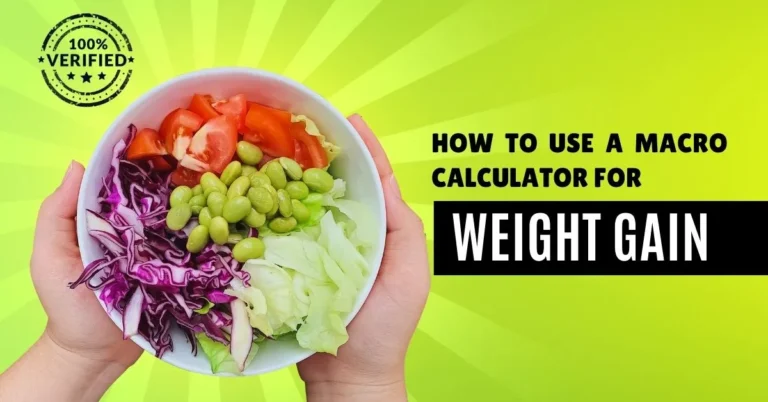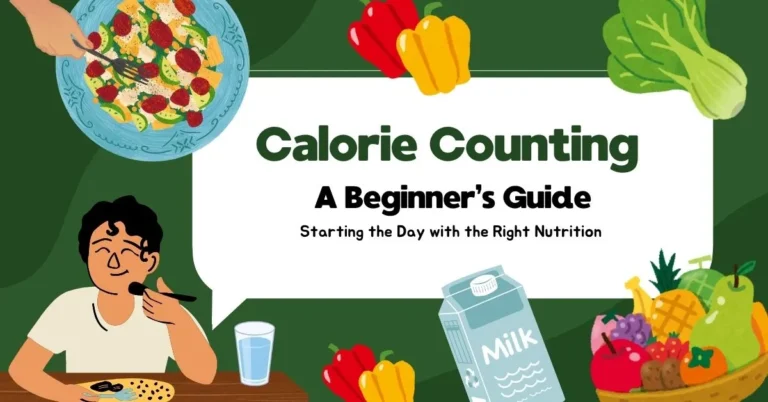Introduction
Bulking is more than just eating more food—it’s about eating the right balance of macronutrients to maximize muscle growth while keeping fat gain under control. This is where a Macro Calculator comes in.
If you’re wondering:
✅ How many calories should I eat to gain muscle?
✅ What’s the best macro ratio for bulking?
✅ How do I track my protein, carbs, and fat intake?
You’re in the right place! This guide will show you how to use a Macro Calculator to create the perfect bulking plan.
Step 1: Calculate Your Caloric Needs
The first step to bulking is knowing how many calories you need daily. This is determined by your Total Daily Energy Expenditure (TDEE)—the number of calories you burn in a day.
How to Find Your TDEE:
1️⃣ Use a TDEE Calculator.
2️⃣ Enter your age, weight, height, gender, and activity level.
3️⃣ The calculator will show your maintenance calories (how much you need to maintain your weight).
📌 Bulking Tip:
To gain muscle, you need a caloric surplus. Start with 10-15% more calories than your TDEE.
👉 Example:
- TDEE: 2,500 calories/day
- Bulking Calories (10% surplus): 2,750 calories/day
Step 2: Set Your Macro Ratios for Bulking
Once you know your calorie intake, you need to divide it into macros:
✅ Protein (Muscle Building) – 1 to 1.2g per pound of body weight
✅ Carbs (Energy for Workouts) – 40-50% of total calories
✅ Fats (Hormone Support) – 20-30% of total calories
Example Macro Breakdown (For a 2,750-Calorie Bulk):
- Protein: 200g (800 calories)
- Carbs: 350g (1,400 calories)
- Fats: 80g (550 calories)
📌 Use a Macro Calculator to Automate This!
Instead of doing the math manually, try the Macro Calculator. Just enter your details, select ‘muscle gain,’ and get your exact macro breakdown instantly!
Step 3: Plan Your Meals Based on Macros
Now that you have your macros, it’s time to put them into real food. Here’s a simple bulking meal plan:
Sample Bulking Meal Plan (2,750 Calories)
🥚 Breakfast:
- 3 scrambled eggs (18g protein, 15g fat)
- 2 slices whole wheat toast (30g carbs)
- 1 banana (27g carbs)
- 1 tbsp peanut butter (8g fat)
🍗 Lunch:
- 6 oz grilled chicken (42g protein)
- 1 cup cooked rice (45g carbs)
- 1/2 avocado (10g fat)
🥩 Dinner:
- 6 oz steak (48g protein, 10g fat)
- 1 large sweet potato (50g carbs)
- Steamed broccoli (10g carbs)
🍌 Snacks:
- Protein shake (30g protein)
- Handful of almonds (14g fat)
📌 Tracking Tip:
Use an app like MyFitnessPal or Cronometer to log your meals and ensure you’re hitting your macros.
Step 4: Adjust Macros Based on Progress
Bulking isn’t one-size-fits-all. You may need to adjust your macros based on your progress:
✅ If you’re gaining too much fat: Reduce carbs by 10% and increase protein.
✅ If you’re not gaining weight: Increase calories by 200-300 per day.
✅ If you feel sluggish or low-energy: Increase carbs slightly.
Check your progress every 2-3 weeks and fine-tune your diet accordingly.
Step 5: Combine Nutrition with Strength Training
Macros alone won’t build muscle—you need progressive overload in the gym.
🏋️ Best Training Plan for Bulking:
- 4-5 weightlifting sessions per week
- Focus on compound lifts (squats, deadlifts, bench press)
- Increase weight gradually to stimulate muscle growth
🔹 Key Supplements for Bulking:
- Whey protein (if struggling to hit protein goals)
- Creatine (for strength and muscle mass)
- Omega-3 (for joint health)
Common Mistakes to Avoid While Bulking
🚫 Eating too much too fast → Leads to excess fat gain.
🚫 Not tracking macros → You may not eat enough protein.
🚫 Skipping workouts → Extra calories = fat, not muscle.
🚫 Not drinking enough water → Hydration is key for muscle recovery.
Final Thoughts: Start Bulking the Right Way!
Using a Macro Calculator for Bulking takes the guesswork out of your diet, helping you build muscle without unnecessary fat gain.
🚀 Ready to start? Try the free Macro Calculator now!
🔹 Bookmark this guide and share it with anyone looking to bulk the right way! 💪🔥
SEO & Formatting Notes:
✅ Short paragraphs, easy-to-read style
✅ Use of bold, emojis, and bullet points for engagement
✅ Internal linking to related calculators (TDEE, Macro, etc.)
✅ Meta Description:
“Learn how to use a Macro Calculator for bulking. Get your ideal macro ratio, build muscle efficiently, and avoid common bulking mistakes!”
FAQs (SEO-Optimized for Featured Snippets)
1. How long should I bulk?
💡 Most people bulk for 3-6 months before switching to a cutting phase.
2. What is the best macro ratio for bulking?
💡 A good starting point: 40% carbs, 30% protein, 30% fats. Adjust based on results.
3. Can I bulk without tracking macros?
💡 Yes, but tracking ensures muscle gain, not fat gain.
4. Should I eat the same macros on rest days?
💡 You can slightly reduce carbs on rest days, but keep protein high.






